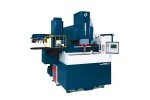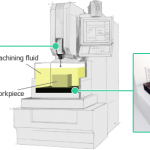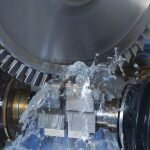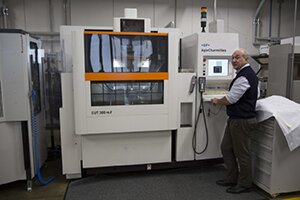HAESL, a joint venture between Rolls-Royce, SIAEC and HAECO, provides a service for the repair and maintenance of aircraft engines and components for many of the leading airlines worldwide. One of the operations that ONA machines are most commonly used for is the machining of honeycomb lining structures.

HAESL has the capacity to carry out the complete repair and maintenance of the Rolls-Royce RB211 and TRENT series of engines, which are widely used in many of the aircraft currently operating. With an annual average of approximately 200 engines, HAESL has serviced more than 3,000 Rolls-Royce engines from the RB211 and TRENT series since its inception.

One of the operations which HAESL most commonly performs with its ONA EDM machines is machining the structure of the honeycomb linings that form part of some of the aircraft turbine components. The HAESL Centre of Excellence which specialises in this task was the first in the world to achieve the “Gold Award” accreditation from Rolls Royce.
 Thanks to the advanced technology of the NX machine generator, the thickness of the white layer (material melted down and stuck to the surface of the workpiece) is maintained within the required tolerances even in the roughing phase. Its thickness is further reduced in the finishing phase thanks to the microfine module that is built into the generator.
Thanks to the advanced technology of the NX machine generator, the thickness of the white layer (material melted down and stuck to the surface of the workpiece) is maintained within the required tolerances even in the roughing phase. Its thickness is further reduced in the finishing phase thanks to the microfine module that is built into the generator.
In this type of work, the eroded material usually forms globules that adhere to the workpiece during the roughing process. These globules are practically  eliminated during the finishing cycle (final roughness VDI 31 or lower). In order to achieve this end result without globules adhering to the workpiece, there is no need to reduce the speed of erosion or modify the standard erosion parameters of the NX machine generator.
eliminated during the finishing cycle (final roughness VDI 31 or lower). In order to achieve this end result without globules adhering to the workpiece, there is no need to reduce the speed of erosion or modify the standard erosion parameters of the NX machine generator.
The ONA long-life ecological filter offers a significant advantage in this process thanks to the excellent quality of filtration (1 micron) which it constantly provides. The continuous flow of perfectly clean dielectric reduces the risk of residues adhering to the workpiece and unwanted electrical discharges.
Source ONA Electroerosion
More information
Visit the official ONA website.

 New High-Speed Z-Axis Head Enhances Speed and Efficiency in Large Sinker EDM Applications
New High-Speed Z-Axis Head Enhances Speed and Efficiency in Large Sinker EDM Applications
 Perfect micromachining for electronic components with GF Machining Solutions’ new AgieCharmilles FORM S 350
Perfect micromachining for electronic components with GF Machining Solutions’ new AgieCharmilles FORM S 350
 Ceramics: EDM Necessity, Not Luxury
Ceramics: EDM Necessity, Not Luxury
 Machining completed on live nuclear reactor pipeline system for first time in industry
Machining completed on live nuclear reactor pipeline system for first time in industry
 Machining and Surface Finishing are Converging
Machining and Surface Finishing are Converging


